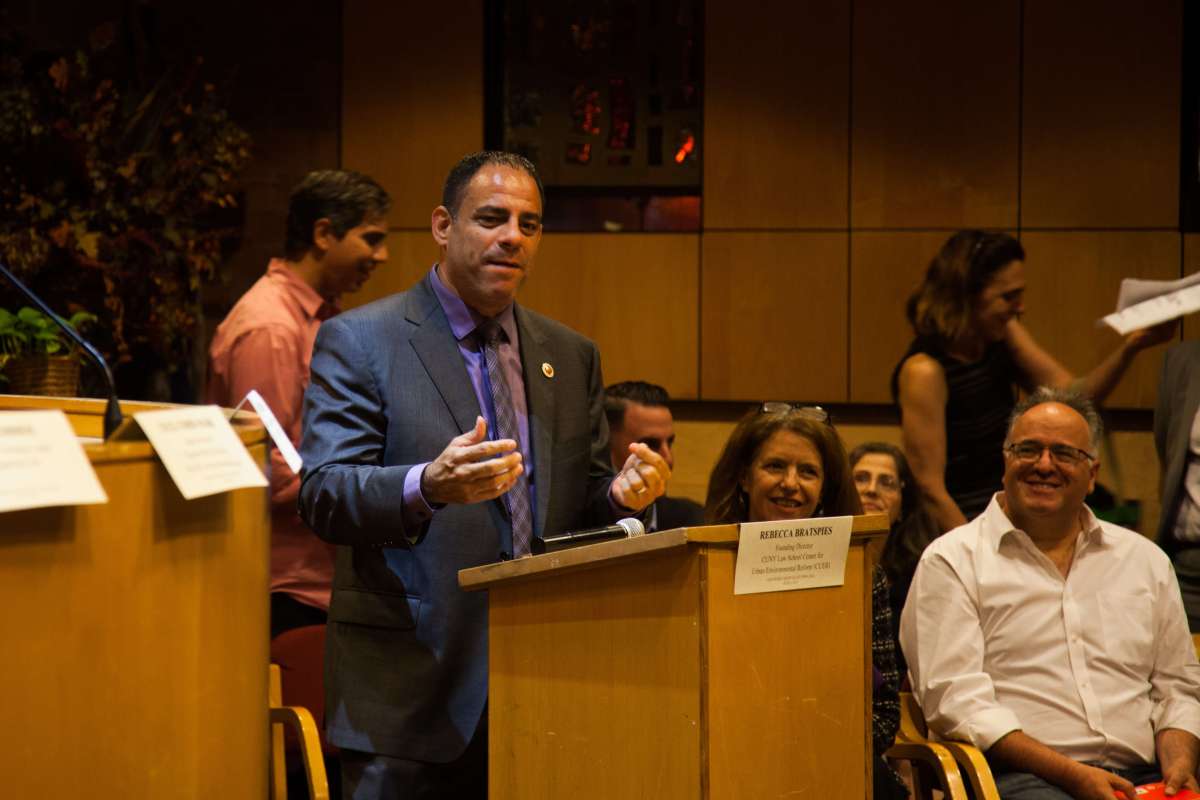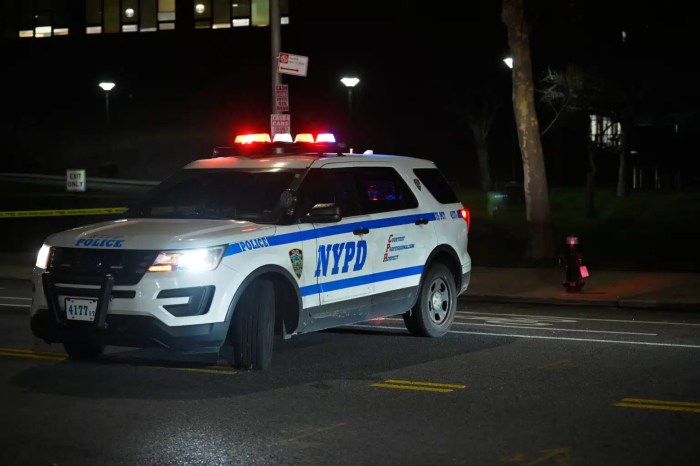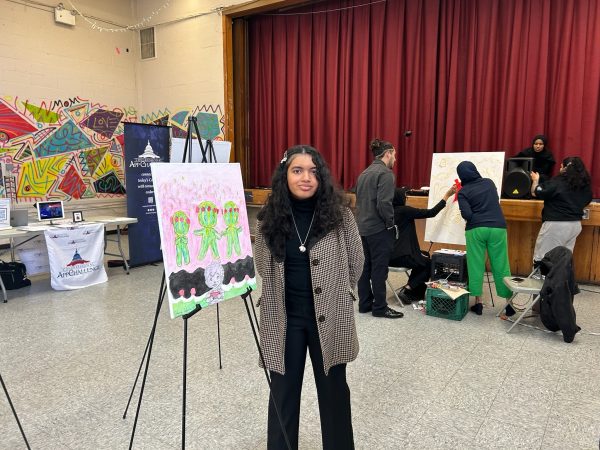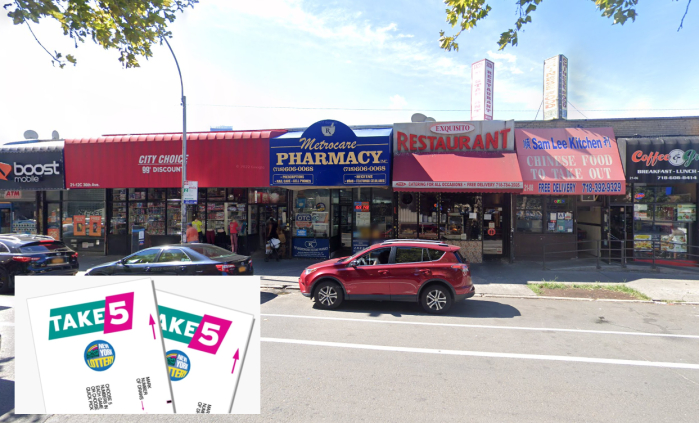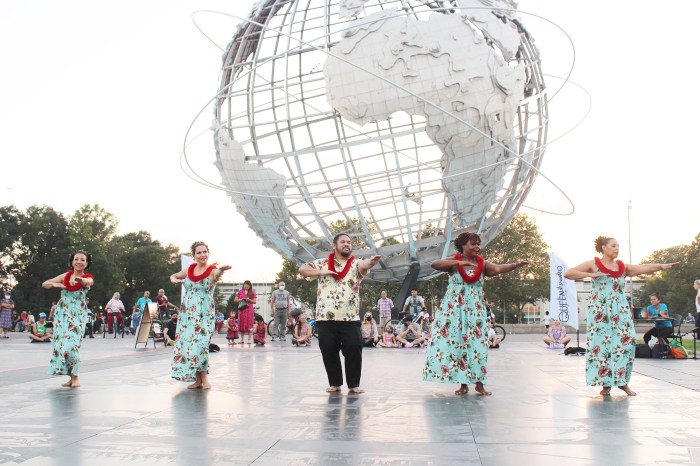As the City Planning Commission considers the borough-based replacement for the detention centers on Rikers Island that roiled community boards in Queens on its way to the City Council, Astoria Councilman Costa Constantinides is raising a different question about the notorious prison: what is a just way to use the 413-acre tract of public land?
Constantinides organized a discussion on the options for a renewable plan to use the land on Thursday that featured a panel of experts in the fields of economic justice, criminal justice and environmentalism, as well as a group of legislators including Congresswoman Alexandria Ocasio-Cortez and state Senator Jessica Ramos, among others.
“We all know the moral imperative — the social justice imperative of closing Rikers Island. We can make sure that this land is never used for any atrocity again,” said Constantinides. “We need to think bigger. It’s time for us to think about how we can get climate justice for the same communities that were torn apart by the criminal justice system.”
The experts and politicians discussed a range of ideas between the abstract and the practical.
They began by exploring the notion of what justice would mean for the inmates and marginalized communities that have borne the brunt of the substandard conditions and harsh practices of the prison.
Then they shared ideas of what environmental projects could fit those criteria. These included solar panels that could provide enough energy to shut down nearby power plants (of which Queens has three), a new wastewater treatment facility, investing pension funds in renewables, and even building marijuana greenhouses on the island.
“What we’re out to do are the hard things. We’re out to do the things that are visionary,” said Ocasio-Cortez.
While the panel received an outpouring of community support filling the sanctuary of the Jewish Center of Jackson Heights to capacity with a line wrapping along the block, it attracted resistance too in the form of a small group of protesters in MAGA hats.
In the same manner, the discussion extended beyond pie-in-the-sky plans to the funding and legislation that would be necessary to bring them to fruition. The panelists did not shy away from the obstacles facing their hopes for the island.
“It’s not only possible to take public land that we pay taxes for and that we put elected officials to look after — it’s not only possible for us to dream what we want there, it’s absolutely necessary because into the vacuum will always go real estate power when it comes to land use in the city,” said Cecil Corbin-Mark, deputy director of WE-ACT for the Environmental Justice.
A renewable Rikers plan would depend on a number political balls in the air. One of the primary things that Constantinides said would need to happen first would be to ensure they need to close Rikers in a shorter timeframe than the one Mayor de Blasio currently has planned. As a part of de Blasio’s plan, Rikers is supposed to close in a decade.
Constantinides said that based on Intergovernmental Panel on Climate Change and the city’s own report we have 11 years to go renewable.
The second prerequisite would be the Climate and Community Protection Act, a piece of legislation co-sponsored by Ramos, which sets a deadline to end New York’s use of fossil fuels.
“If we want to actually have an island that can provide energy. We must ensure that we have a codified law that would move us to 100 percent renewable energy. Right now the state doesn’t have that,” said Mariza Silva-Farrell, the executive director of ALIGN, an alliance of labor organizations for sustainability.
In order to get these initiatives rolling, Constantinides ended the meeting by unveiling a petition to push his plan forward. Community members can read more about his plan and sign the petition at council.nyc.gov/costa-constantinides/petition/.

